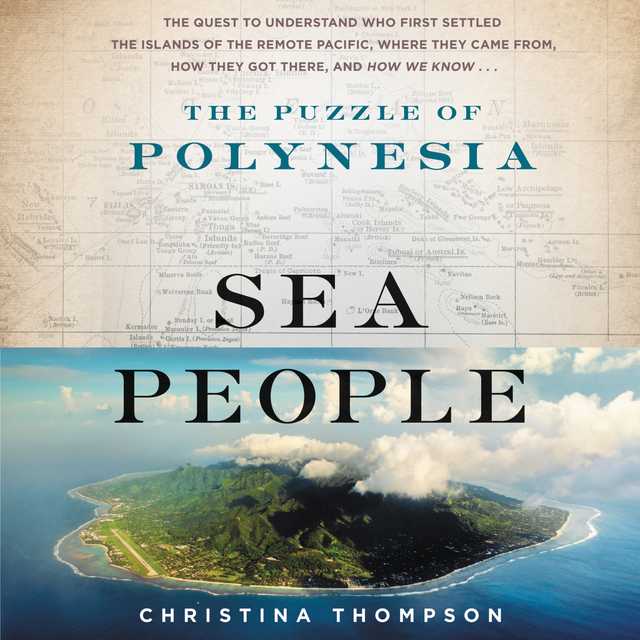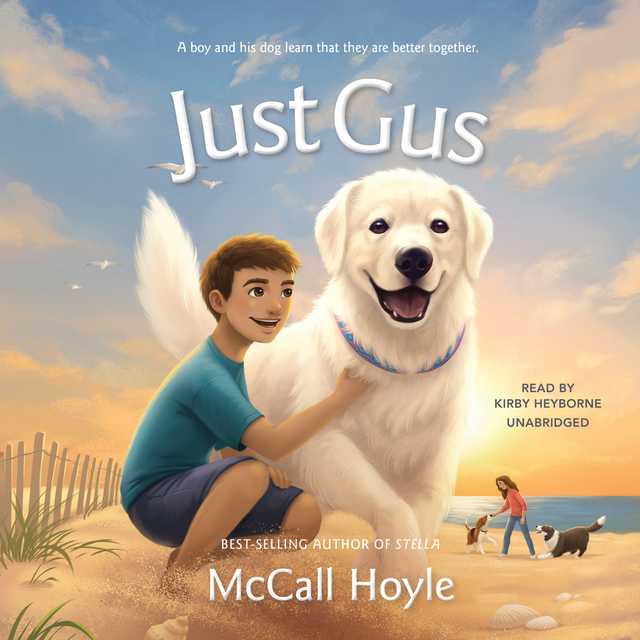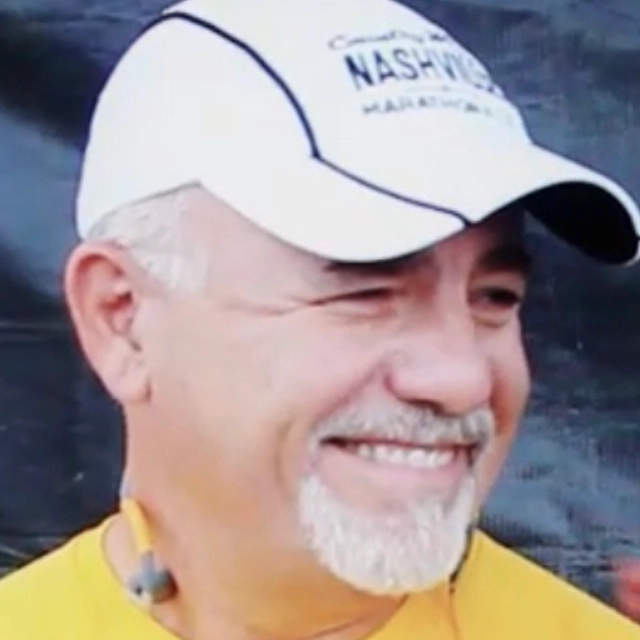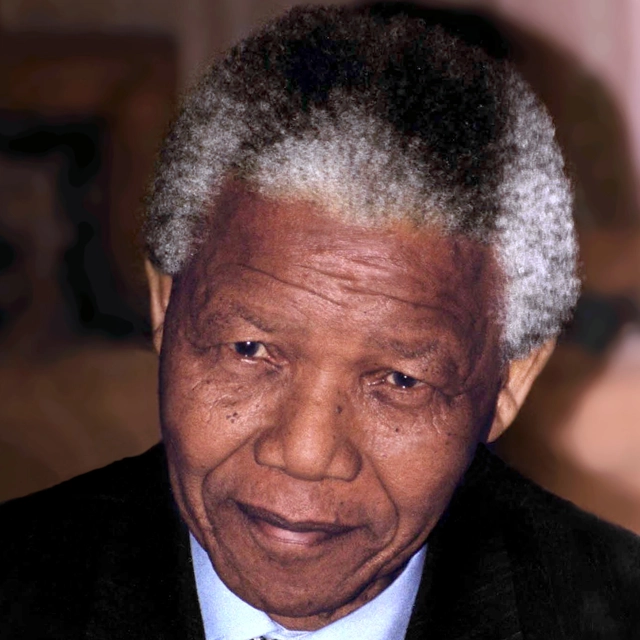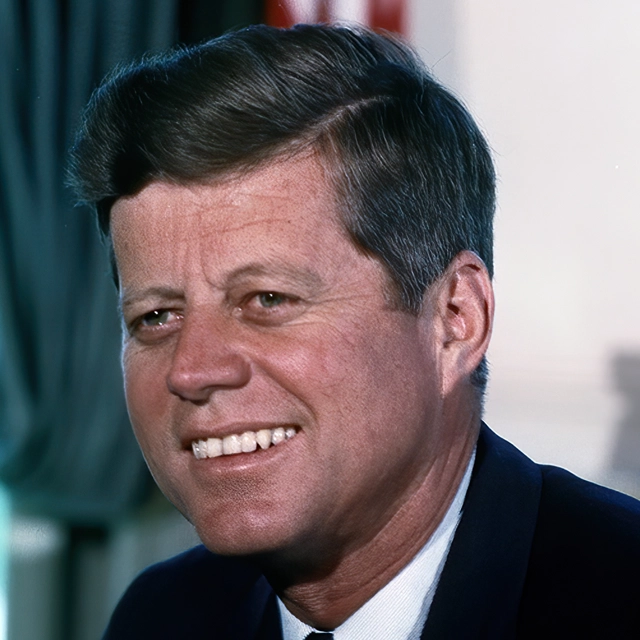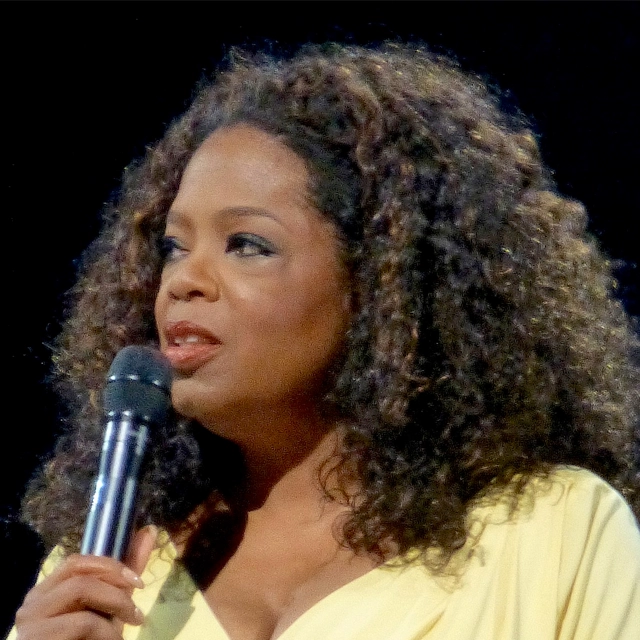Sea People Audiobook Summary
A blend of Jared Diamond’s Guns, Germs, and Steel and Simon Winchester’s Pacific, a thrilling intellectual detective story that looks deep into the past to uncover who first settled the islands of the remote Pacific, where they came from, how they got there, and how we know.
For more than a millennium, Polynesians have occupied the remotest islands in the Pacific Ocean, a vast triangle stretching from Hawaii to New Zealand to Easter Island. Until the arrival of European explorers they were the only people to have ever lived there. Both the most closely related and the most widely dispersed people in the world before the era of mass migration, Polynesians can trace their roots to a group of epic voyagers who ventured out into the unknown in one of the greatest adventures in human history.
How did the earliest Polynesians find and colonize these far-flung islands? How did a people without writing or metal tools conquer the largest ocean in the world? This conundrum, which came to be known as the Problem of Polynesian Origins, emerged in the eighteenth century as one of the great geographical mysteries of mankind.
For Christina Thompson, this mystery is personal: her Maori husband and their sons descend directly from these ancient navigators. In Sea People, Thompson explores the fascinating story of these ancestors, as well as those of the many sailors, linguists, archaeologists, folklorists, biologists, and geographers who have puzzled over this history for three hundred years. A masterful mix of history, geography, anthropology, and the science of navigation, Sea People combines the thrill of exploration with the drama of discovery in a vivid tour of one of the most captivating regions in the world.
Other Top Audiobooks
Sea People Audiobook Narrator
Susan Lyons is the narrator of Sea People audiobook that was written by Christina Thompson
Christina Thompson is the editor of Harvard Review and the author of Come On Shore and We Will Kill and Eat You All: A New Zealand Story, which was shortlisted for the Douglas Stewart Prize for Non-fiction and the William Saroyan International Prize for Writing. Her essays and criticism have appeared in numerous publications, including Vogue, the American Scholar, the Journal of Pacific History, and three editions of Best Australian Essays. She is the recipient of numerous fellowships and awards, including a National Endowment for the Arts Creative Writing Fellowship, a Writer’s Grant from the Australia Council, and a National Endowment for the Humanities Public Scholar Award. A dual citizen of the US and Australia, she lives outside of Boston with her family.
About the Author(s) of Sea People
Christina Thompson is the author of Sea People
More From the Same
- Author : Christina Thompson
- Come On Shore and We Will Kill and Eat You All
- Publisher : HarperAudio
- Abraham
- American Gods [TV Tie-In]
- Dead Ringer
- House of Sand and Fog
- Prey
Sea People Full Details
| Narrator | Susan Lyons |
| Length | 11 hours 40 minutes |
| Author | Christina Thompson |
| Category | |
| Publisher | HarperAudio |
| Release date | March 12, 2019 |
| ISBN | 9780062897572 |
Subjects
The publisher of the Sea People is HarperAudio. includes the following subjects: The BISAC Subject Code is Expeditions & Discoveries, History
Additional info
The publisher of the Sea People is HarperAudio. The imprint is HarperAudio. It is supplied by HarperAudio. The ISBN-13 is 9780062897572.
Global Availability
This book is only available in the United States.
Goodreads Reviews
Donna
March 18, 2019
Christina Thompson is the author of Come On Shore and We Will Kill and Eat You All, which I read and loved. I was thrilled when I saw that she was about to publish another book, and even more so when I found a review copy; thanks go to Edelweiss and Harper Collins. This book is for sale now. For centuries, Western scholars have tried to tease apart the many unknown aspects of Polynesian history. The islands are spread across an area of the Pacific Ocean (and beyond) so large that all of the Earth’s landmasses could fit into it, and there would still be room for an extra one the size of Australia. And yet there’s undeniable evidence that they navigated from one to another in canoes, without compasses or written maps of any kind. How the heck did they do it? Thompson discusses the early European efforts, from the ‘discovery’ of various islands—and she points out that Europeans jealously guarded information, and so British explorers didn’t benefit from what the Spanish found, for example, and vice versa—to present day. She talks about the differing points of view, languages, and cultural divides that prevented the white folk from understanding what islanders were trying to tell them, and from believing that they knew as much as they did. As far as I can tell, Thompson is the first Caucasian writer to approach this subject with respect for the islander peoples about whom she is writing; her husband and sons are of Maori descent, and so for her, this connection merges the academic and the personal. The thing that makes Thompson so readable is her wry take on the errors made by those that came before—mostly the Westerners that approached the area with paternalism tinged with more than a little racism in many cases. I’ll be reading along and thinking yes yes, this is interesting…and then I’ll come across a remark and reread it—did she just say what I think she just said? And then I am laughing out loud. Find me a geographer, an anthropologist, a sociologist that can do that. In particular, her unpacking of the whole Kon-Tiki debacle is unmissable. If I could change anything, it would be to have been able to read this before I went into teaching instead of after retirement. I taught a lot of Islander kids, and the wisdom is that when we teach American history, we incorporate the history of each ethnic group represented in the classroom. I knew how to include my African-American students, and I knew what to tell kids of Chinese and Japanese backgrounds. I had material for my Latino kids. But with my Islander students, all I could do is say that I had truly tried to find information for them, but what little I found was so deadly dull and written at such a high literacy level that it wouldn’t work for them. And what would really kick ass is if this writer, at some lull between high-powered academic projects, could write something for children or young adults of Maori descent. Right now, English-speaking Pacific Island kids have one Disney movie. That’s it. This book is highly recommended to every reader with post-high-school literacy ability and stamina. It’s a cultural treasure, and though I rarely do this with galleys, I will go back and read this again, because there’s no way to take it all in the first time, even when making notes. What a wonderful find.
Claire
June 13, 2021
Growing up in rural/coastal New Zealand and being immersed in Maori culture from the age of 5-12, the myths, legends, stories, cultural practices have always resonated with me, perhaps because I was so young, or because there was a clear connection to the landscape and environment that rang true, the geography of New Zealand was part of the mythology, that curious blend of enchantment and reality.I read Sea People not so much out of that European curiosity to discover where people originated from, but for the familiarity of that "way of seeing" through the oral tradition of storytelling, of describing things from where I see and what I see around me, not from the lofty heights of above looking down. My curiosity in all honesty lay too in wondering if a woman's perspective and approach might be different. I loved it. Like her own mixed family, the author straddles the masculine/feminine, Polynesian/European aspects and shares something that goes back over all the approaches to Polynesia from the earliest eyewitnesses of 1521 to the brilliant modern day reconstructions of Polynesian canoes, that set sail with a crew of experimental voyagers, trained in the old non-instrument methods of navigation, to re-enact the voyages of the ancient Polynesians.Written in six parts, chronologically, we follow the thinking of the different eras, immersing in the exploration and research studies of the time, travelling through all the speculation, attitudes, reverence and mystery of a very Eurocentric enquiry, until recent times when those of Polynesian heritage themselves, as decolonisation and indigenous rights movements were gaining strength worldwide, demanded representation and respect.For me that was the highlight of the literary journey, when Nainoa Thompson, a young Hawaiian, did all he could to learn the old ways, studying the stars, the winds, the waves, the swell, the imagined island, all the techniques known that had been passed down, to navigate like the ancient mariners, with nothing but what nature offered. And in the face of disbelief by all the European sceptics who'd come before, unable to embrace the paradigm of this ancient skill, they succeeded, using practical sea voyaging, no computer simulation or dusty pottery or annals of research, a brilliant touch of reality and reaching back through the generations of ancestry.A wonderful history and beautifully accessible read. Highly recommended.
Emma Deplores Goodreads Censorship
February 02, 2022
A very engaging work of popular nonfiction, about the history of Polynesia: the most remote, furthest-flung islands in the world, all of which were nevertheless settled many centuries ago. Since the earliest inhabitants left no written records of their exploits, people—largely Europeans; the Polynesians themselves are far less confused about this—have long wondered who they were and how they got there, traveling thousands of miles over open ocean with (at least at first) no knowledge of what they might find, and all of it without maps, charts, compasses, sextants, or any of the other tools used by modern sailors.This book chronicles the historical facts that are known about Polynesia, beginning with the first contact with Europeans, the islands’ history over the last several centuries, various theories (from the plausible to the crackpot) about the islanders’ ancestry and their arrival, what is known scientifically and what the islanders understand about themselves. Although the author is white and by virtue of focusing on recorded facts, it’s a largely Eurocentric perspective, she’s respectful of Polynesians’ perspectives and priorities. Perhaps helpfully for that, Thompson’s husband is Maori and this is part of their children’s heritage.I really enjoyed reading this: though I had some prior knowledge of the topic, it’s more informative and in-depth than I’d read before. With the text little over 300 pages, and a huge area of the world to cover—from Hawaii to New Zealand to Easter Island, and everything in between—there’s little sustained focus on any particular archipelago, but it’s a satisfying large-scale exploration. It’s told in a very engaging, readable style, in relatively short sections, and kept me interested throughout. Some of the material, especially around traditional forms of navigation (which in recent decades some Polynesians have successfully brought back!), the nature of oral vs. written cultures, and recent archaeological finds and DNA testing, I found particularly fascinating. And the book is thoughtful and provides worthwhile analysis, along with extensive research notes.A solid recommendation for anyone interested in the Pacific; I think I finally have Polynesia, Melanesia and Micronesia straight (only to learn that the distinctions among them are far more permeable than once believed)!
Robert
April 16, 2020
This is a terrific account, not just of what we have come to know about the origins of the Polynesian people, but also of how we've come to know what we know. Thorough in its research, but completely readable for a layman like me, this is a great general nonfiction work and I can see why it's getting good reviews and notices online. When and if we're ever able to travel again, Tahiti, Hawaii, New Zealand, and Easter Island just went to the top of my list.
Oleksandr
April 14, 2022
This is a great non-fic that not only tries to answer from where Polynesians came from and how they spread to become the most widely spread people on our Earth (so widely that limits cannot be seen simultaneously from the orbit!) but also the journey to find these answers, with quite a few false starts. I read it as a part of buddy reads for March 2022 at Non Fiction Book Club group.The book starts with the notion that the author’s husband Steve from New Zeeland Seven can get on a plane in the country of his birth, fly for nine hours, and get off in a completely different country where he will be treated by the locals as one of their own. Then, if he wants, he can get on another plane, fly for nine hours in an entirely different direction, get off, and still be treated like a local. And then, if he wants to go back to where he started, it’s still another nine hours by plane. and the European ‘discovery’ of Hawaii by Cook in 1778.The earliest theories that turned false show how we humans may err. First was a search for Terra Australis Incognita, or “the Unknown Southland,” existence of which was based on a bit of Ptolemaic logic that there must be an equal weight of continental matter in the Northern and Southern Hemispheres, or else the world would topple over and, as the great mapmaker Gerardus Mercator envisioned it, “fall to destruction among the stars.” The second was the earliest assumption about Polynesians that had not in fact come from anywhere but had been created in situ by God. This actually opens the whole new can of worms (if created there then they aren’t of Adam seed), which hasn’t been dug deeper in the book.The 19th century brought modern ideas of linguistics (e.g. Indo-European proto-language) and Romantism (which both favored seeking one’s roots and adoring ‘primitive’). Some similarities between Greek and Polynesian myths led to seeking origins among a lost tribe of Jews, Egyptians, or ancient Greeks, and finally the main theory that they were Aryans. The latter was supported hypothetical ancestral language, known as Proto-Indo-European, which (erroneously) was linked to Polynesian. According to this theory, Polynesians were the “remnants of a race once extensively dominating in Asia,” who had colonized the Pacific in “very very remote antiquity.” Actually their languages are from Austronesian language family, a truly stupendous grouping of more than a thousand languages, which includes, in addition to all the Oceanic languages, those of the Philippines, Borneo, Indonesia, Timor, the Moluccas, and Madagascar.The book follows the ideas and different ways of research, from Thor Heyerdahl voyage of Kon-Tiki (and later, historically more correct voyages of canoes), computer simulations, DNA analysis, anthropology, etc. This is an excellent example of what a non-fic book should be like, a lot of topics from different sciences are dumbed down to ordinary readers. Recommended.
Moonkiszt
April 18, 2020
This was an interesting read, but it did get a little sleepy from time to time. The search for the one bright origin story quickly melted in to a soup from a variety of independently launched origins, all interesting enough on their own.Best of all was the process the author used as she looked carefully at all her resources. . . .she didn't seem to be biased one way or the other and was open to more than one theory or truth.My most surprising takeaway from this book was my personal grief for the Moa, that Big Bird we never met. . . mankind once again stepping on its d**k, killing all before its even realized what it has done. And so it goes.3.5 stars, rounded up and placed carefully on a paradisical island for safe keeping.
Frequently asked questions
Listening to audiobooks not only easy, it is also very convenient. You can listen to audiobooks on almost every device. From your laptop to your smart phone or even a smart speaker like Apple HomePod or even Alexa. Here’s how you can get started listening to audiobooks.
- 1. Download your favorite audiobook app such as Speechify.
- 2. Sign up for an account.
- 3. Browse the library for the best audiobooks and select the first one for free
- 4. Download the audiobook file to your device
- 5. Open the Speechify audiobook app and select the audiobook you want to listen to.
- 6. Adjust the playback speed and other settings to your preference.
- 7. Press play and enjoy!
While you can listen to the bestsellers on almost any device, and preferences may vary, generally smart phones are offer the most convenience factor. You could be working out, grocery shopping, or even watching your dog in the dog park on a Saturday morning.
However, most audiobook apps work across multiple devices so you can pick up that riveting new Stephen King book you started at the dog park, back on your laptop when you get back home.
Speechify is one of the best apps for audiobooks. The pricing structure is the most competitive in the market and the app is easy to use. It features the best sellers and award winning authors. Listen to your favorite books or discover new ones and listen to real voice actors read to you. Getting started is easy, the first book is free.
Research showcasing the brain health benefits of reading on a regular basis is wide-ranging and undeniable. However, research comparing the benefits of reading vs listening is much more sparse. According to professor of psychology and author Dr. Kristen Willeumier, though, there is good reason to believe that the reading experience provided by audiobooks offers many of the same brain benefits as reading a physical book.
Audiobooks are recordings of books that are read aloud by a professional voice actor. The recordings are typically available for purchase and download in digital formats such as MP3, WMA, or AAC. They can also be streamed from online services like Speechify, Audible, AppleBooks, or Spotify.
You simply download the app onto your smart phone, create your account, and in Speechify, you can choose your first book, from our vast library of best-sellers and classics, to read for free.
Audiobooks, like real books can add up over time. Here’s where you can listen to audiobooks for free. Speechify let’s you read your first best seller for free. Apart from that, we have a vast selection of free audiobooks that you can enjoy. Get the same rich experience no matter if the book was free or not.
It depends. Yes, there are free audiobooks and paid audiobooks. Speechify offers a blend of both!
It varies. The easiest way depends on a few things. The app and service you use, which device, and platform. Speechify is the easiest way to listen to audiobooks. Downloading the app is quick. It is not a large app and does not eat up space on your iPhone or Android device.
Listening to audiobooks on your smart phone, with Speechify, is the easiest way to listen to audiobooks.

